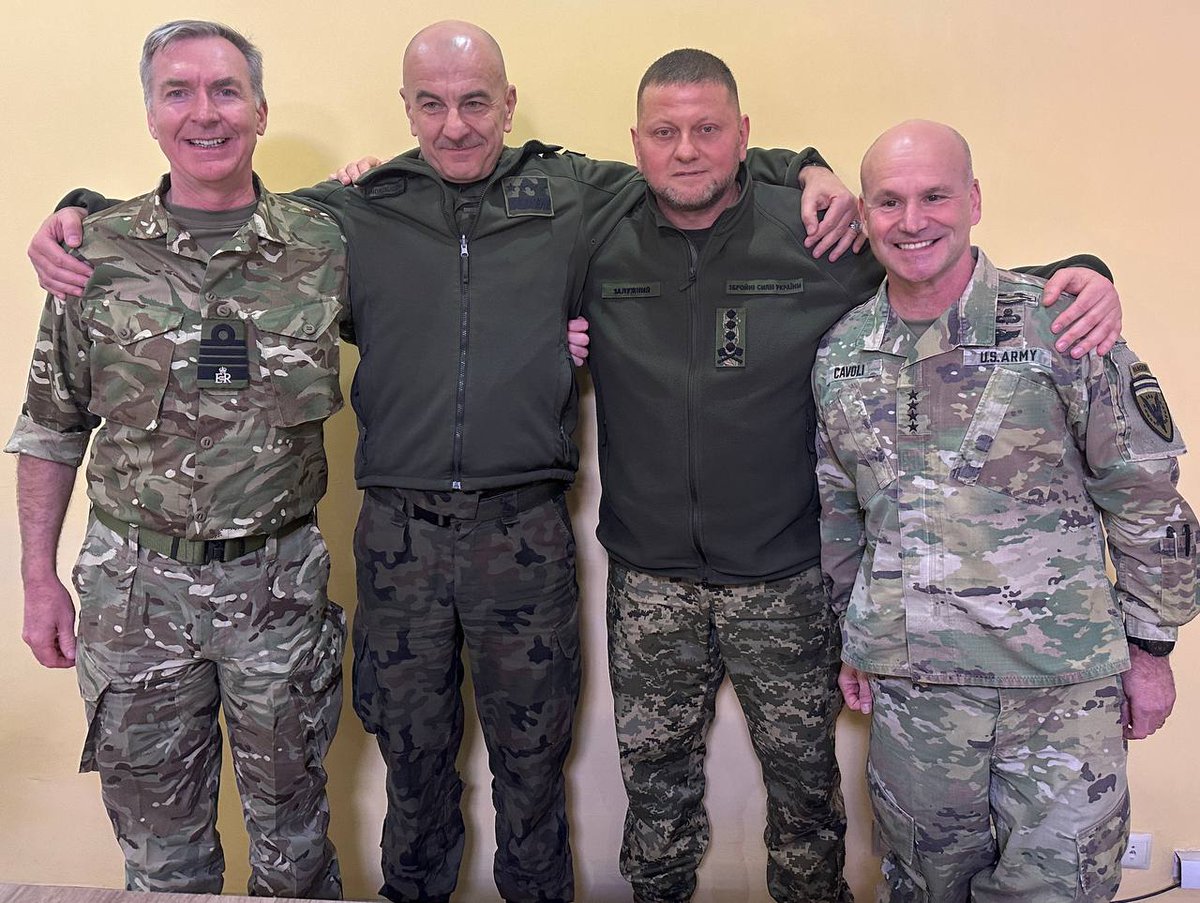After boneheaded comments by 'anonymous sources' & commentary by mostly uninformed who have never seen combat, there's been increasing back-and-forth about how @NATO shouldn't "lecture" Ukraine's army on anything re their offensive.
IMHO, none of this is helpful. A 🧵1/13
IMHO, none of this is helpful. A 🧵1/13
https://twitter.com/PhillipsPOBrien/status/1697139679366127927
The conversations between senior military leaders is likely a lot different than what's reported.
In my experience, these exchanges - in combat & in training - are extremely helpful. I'm sure GEN Zaluzhnyi is thankful for the support. 2/
mil.in.ua/en/news/ukrain…
In my experience, these exchanges - in combat & in training - are extremely helpful. I'm sure GEN Zaluzhnyi is thankful for the support. 2/
mil.in.ua/en/news/ukrain…
It might surprise most to hear that US Commanders in combat (& training) are also provided retired generals as "senior mentors" (we call them "gray beards") who contribute to the education of generals who are doing things for the first time. And they are extremely helpful. 3/
As a new Division Commander in 2007 I was given orders to deploy 30k US soldiers & link up with 5 Iraqi Army divisions (another 90K) to conduct a variety of missions. My senior mentors were 2 retired 4-stars. The info provided - in prep training & combat - was invaluable. 4/
BTW, most of their advice I took, some I didn't. But the mentoring shaped my decision-making.
While I had been a soldier for 30 years, commanding several times in battle, I had never been a Division Commander in combat with all the responsibilities of of that higher command. 5
While I had been a soldier for 30 years, commanding several times in battle, I had never been a Division Commander in combat with all the responsibilities of of that higher command. 5
When I hear "NATO armies haven't done these kinds of operations & Zaluzhnyi has" I smile.
Because truthfully, yes NATO has and no Z hasn't. That isn't meant to be contentious, or an insult to Zaluzhnyi.
NATO has conducted large scale targeting, intel gathering, .... 6/
Because truthfully, yes NATO has and no Z hasn't. That isn't meant to be contentious, or an insult to Zaluzhnyi.
NATO has conducted large scale targeting, intel gathering, .... 6/

movement of forces, RSOI, operational logistics, and headquarters staff planning and wargaming in training, exercises and in combat.
While GEN Zaluzhnyi is extremely talented, he has never before coordinated large scale offensive maneuver w/dozens of combat brigades. 7/
While GEN Zaluzhnyi is extremely talented, he has never before coordinated large scale offensive maneuver w/dozens of combat brigades. 7/
He is conducting kinetic operations (multiple deliberate attacks requiring intense combined arms breaches), while also synchronizing intel gathering/targeting, operational logistics for multi-domain operations of conventional, SOF, territorials, rear area insurgents,... 8/
...while moving reserves to the right place, integrating newly mobilized & trained forces, overseeing humanitarian relief and movement of non-combatants out of operational areas, etc, etc, etc.
While executing multiple large scale deliberate attacks with breaches on...9/
While executing multiple large scale deliberate attacks with breaches on...9/
...different axes over a 400-600 km front is tough enough, it's just one of his tasks. It's the other things that are a combat commander's real headaches.
Commanders don't need nitpicking from cheap seats (the 1000-mile screwdriver), but he does needs advice & mentoring. 10/
Commanders don't need nitpicking from cheap seats (the 1000-mile screwdriver), but he does needs advice & mentoring. 10/

And, frankly (and perhaps most importantly), when you're the person in charge...you need some friends who are like-minded in your profession of arms.
Friends who know what you're going through, who you can throw ideas at, who will give you a shot of whiskey. 11/
Friends who know what you're going through, who you can throw ideas at, who will give you a shot of whiskey. 11/
While I don't know Admiral Sir Tony Radakin (see this insightful article, below), I personally know General Chris Cavoli.
Those who know GEN Cavoli (& his background) agree he is the perfect person to command @NATO and @US_EUCOM right now. 12/
theguardian.com/world/2023/aug…
Those who know GEN Cavoli (& his background) agree he is the perfect person to command @NATO and @US_EUCOM right now. 12/
theguardian.com/world/2023/aug…
Some countered the early reports of a "slow start" of the UAF offensive with "this is expected for this kind of operation" (I was one of those). That offensive is now gaining momentum.
Those now stoking "UAF shouldn't pay attention to NATO/US advice" may want to reconsider.13/13
Those now stoking "UAF shouldn't pay attention to NATO/US advice" may want to reconsider.13/13
• • •
Missing some Tweet in this thread? You can try to
force a refresh

 Read on Twitter
Read on Twitter







